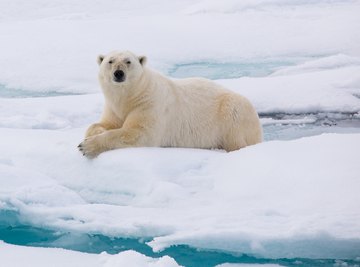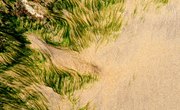
The fast pace of human development since the Industrial Revolution has had an undeniable and often damaging effect on a variety of animal species, resulting in the extinction of several species and the endangerment of numerous others. When a species becomes endangered, however, there can be unanticipated consequences for humanity.
Biodiversity and Chain Reactions
Nature is a system in balance that relies upon interdependence between species. “Species depend upon each other," the U.S. Forest Service says, "like parts of the human body, to make a functioning whole.” So removing a single species can affect many others and, in the long term, have a negative impact on human beings. If osprey, for example, were to become endangered, population numbers of the fish they eat -- pike -- would increase. That would endanger perch, which are eaten by pike. This chain reaction would continue down the food chain, likely resulting in unanticipated consequences for other species along the way.
Bees
Honeybee colonies throughout the world have been mysteriously declining in what has been termed "Colony Collapse Disorder." This has already had a significant impact on the $50 billion a year honey industry worldwide. Over the past 50 years, populations in the United Kingdom have been declining, with three conspicuous breeds becoming extinct and nine others now considered to be endangered. In Canada's Niagara region, 90 percent of commercial colonies have died out, and this is being felt by honey producers as well the region's fruit growers, who depend on the bees to pollinate fruit.
Polar Bears
The polar bear, which lives in the northernmost regions of the world, is considered to be the first species to become directly endangered due to the effects of global warming. Many scientists consider global warming to be a direct result of greenhouse gases getting trapped in the atmosphere because of the burning of fossil fuels. Because the polar ice caps are shrinking, so are inhabitable areas for polar bears. A reduction in the polar bear population would lead to a greater number of seals (upon which polar bears feed), and that, in turn, would lead to fewer of fish -- 10,000 seals weighing 500 pounds each can eat 350,000 pounds of fish per day.
Atlantic Cod
In 2003, the Canadian government officially designated Atlantic cod an endangered and threatened species. The depletion of cod stocks off the coast of Newfoundland, once one of the richest fishing areas in the world, was entirely due to overfishing. Dwindling cod stocks have had devastating economic effects of the local fishermen of Newfoundland, where Atlantic cod has been the dietary and economic mainstay since the 15th Century. A 2010 reassessment of fish stocks by the Canadian government determined cod populations have "diminished to the extent that they are predicted to experience serious or irreparable harm."
References
- Fisheries and Oceans Canada: Recovery Potential Assessment (RPA) for Atlantic Cod (Newfoundland and Labrador, Laurentian North, Laurentian South, Southern Designatable Units)
- United States Department of Agriculture and Forest Service Northeastern Area: Threatened and Endangered Species
- Natural Resources Defense Council: Vanishing Bees
- CapeLinks.com: How Many Pounds of Fish Does a Seal Eat Per Day
